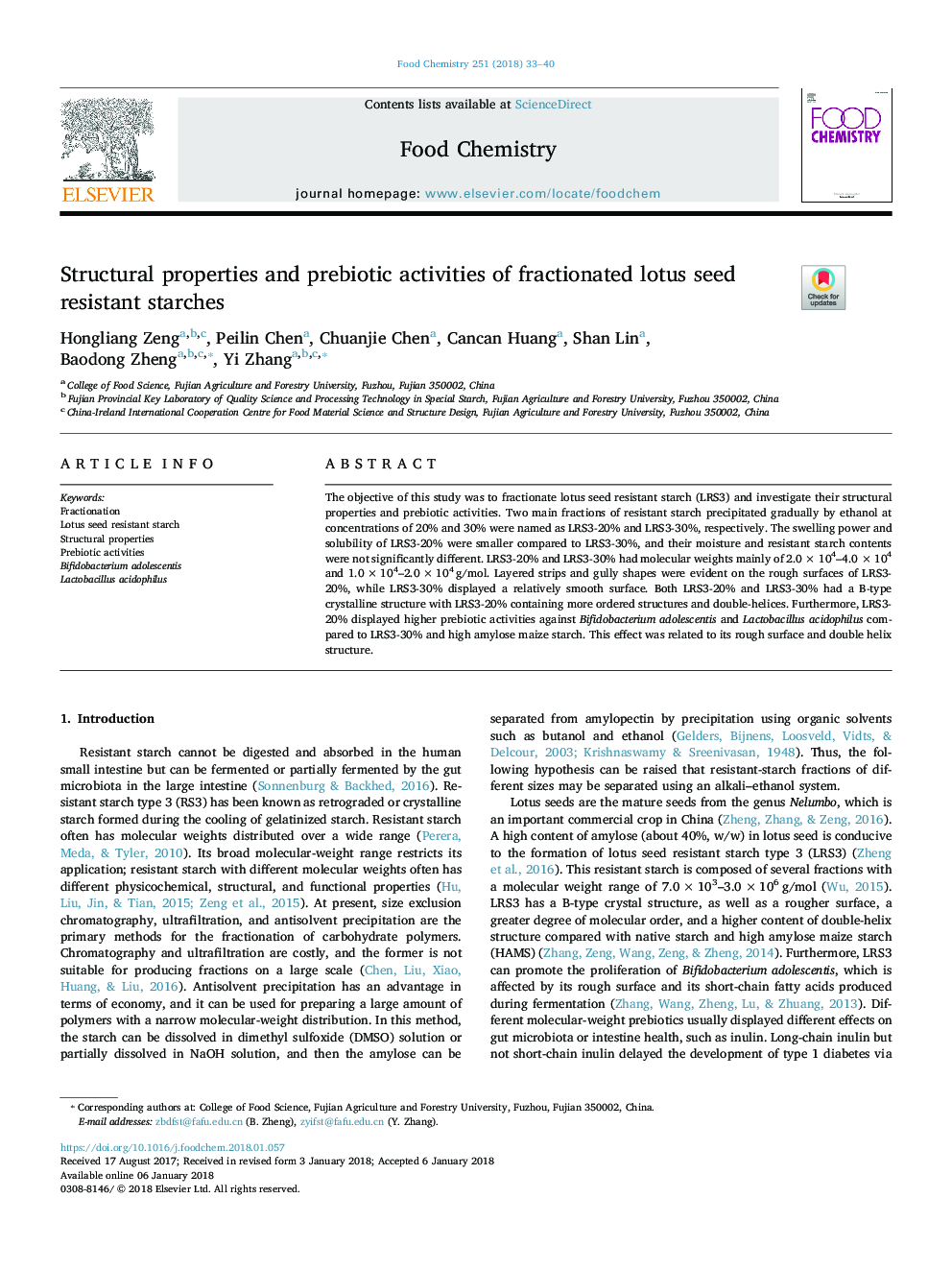| Article ID | Journal | Published Year | Pages | File Type |
|---|---|---|---|---|
| 7585634 | Food Chemistry | 2018 | 8 Pages |
Abstract
The objective of this study was to fractionate lotus seed resistant starch (LRS3) and investigate their structural properties and prebiotic activities. Two main fractions of resistant starch precipitated gradually by ethanol at concentrations of 20% and 30% were named as LRS3-20% and LRS3-30%, respectively. The swelling power and solubility of LRS3-20% were smaller compared to LRS3-30%, and their moisture and resistant starch contents were not significantly different. LRS3-20% and LRS3-30% had molecular weights mainly of 2.0â¯Ãâ¯104-4.0â¯Ãâ¯104 and 1.0â¯Ãâ¯104-2.0â¯Ãâ¯104â¯g/mol. Layered strips and gully shapes were evident on the rough surfaces of LRS3-20%, while LRS3-30% displayed a relatively smooth surface. Both LRS3-20% and LRS3-30% had a B-type crystalline structure with LRS3-20% containing more ordered structures and double-helices. Furthermore, LRS3-20% displayed higher prebiotic activities against Bifidobacterium adolescentis and Lactobacillus acidophilus compared to LRS3-30% and high amylose maize starch. This effect was related to its rough surface and double helix structure.
Related Topics
Physical Sciences and Engineering
Chemistry
Analytical Chemistry
Authors
Hongliang Zeng, Peilin Chen, Chuanjie Chen, Cancan Huang, Shan Lin, Baodong Zheng, Yi Zhang,
